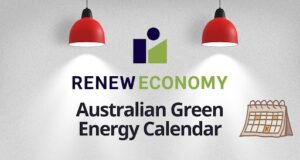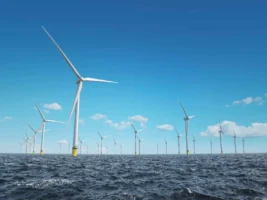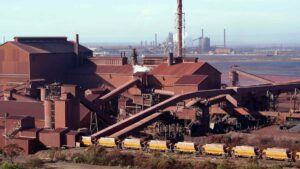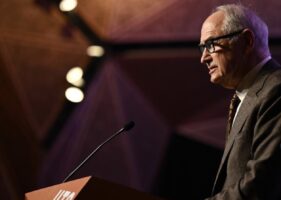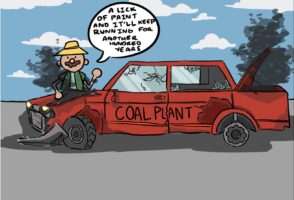The Australian Energy Market Operator has laid out its preferred option for the network upgrades and extension that it says are necessary to accommodate the estimated 6,000MW of new wind and solar projects expected in western Victoria in the coming decade.
AEMO has warned in the past that the network in the area was not strong enough to support the planned renewable investment – which amounts to some $10 billion and which has been mostly drawn to the state’s 50 per cent renewable energy target for 2030.
Already, some 2,000MW of wind and solar currently under construction or being commissioned is at risk of constraints due to network issues. AEMO says new investment is critical if a further 3,000MW is to be built by 2025, and then another 1,000MW by 2030 as it anticipates.
Some wind and solar farms in the affected areas – dubbed the “rhombus of regret” for the shape of the network and its limitations – have already had their outputs downgraded, (see impact of marginal loss factors), while others have been required to add new machinery known as synchronous condensers to ensure “system strength” is maintained.
The recommended investment outlined by CEO Audrey Zibelman is likely to cost $370 million, and deliver nearly twice that amount in “market benefits” – $670 million or net market benefit of $300 million after costs. AEMO will now tender for a supplier, and the proposal will then go to the Australian Energy Regulator for approval.
“Under this proposal, for every dollar invested in the Western Victorian transmission network, the project is expected to deliver almost double that in benefits,” Zibelman says in a statement. AEMO says that without the investment, new wind and solar projects will either be heavily constrained, or will have to be built in areas of weaker wind or solar resources.
The decision to spend $370 million in infrastructure to support $10 billion in investment drew howls of protest from federal energy minister Angus Taylor, who told the Australian Financial Review and The Australian newspapers that it showed state targets, such as those in Victoria, South Australia and Queensland, were “reckless”.
“We remain concerned that reckless Victorian state government actions are hurting Victorian, Tasmanian and South Australian energy consumers,” Taylor was quoted as saying.
It should be noted that the pet project of Taylor’s government, the $6 billion plus Snowy 2.0 pumped hydro scheme, will require at least $2 billion in new network links, and likely much more. AEMO recently put the accumulated market benefits of one of the principal links needed for Snowy 2.0 at $167 million.
Taylor’s remarks rekindles the growing rift between his office and that of Victoria energy minister Lily d’Ambrosio and other state ministers frustrated by Taylor’s failure to call a COAG energy ministers meeting.
D’Ambrosio, in comments to RenewEconomy, blamed federal government disinterest and red tape for the delays in building the necessary infrastructure.
“We don’t shy away from the fact that our ambitious renewable energy targets will require changes and upgrades to the wider transmission network,” d’Ambrosio said.
“While we strongly welcome this decision from AEMO, it has taken too long because of red tape and a federal government not interested in joining the conversation or pursuing recommendations from the Finkel report.
“We’ve been pushing to get started on the necessary infrastructure upgrades and this latest report from AEMO is the next step in supporting our transition to a clean energy future.”
 AEMO’s preferred network option is pretty much as it stated in its draft Integrated System Plan released last year, with a few amendments. The big-ticket items are a new terminal station north of Ballarat and long-distance high voltage transmission lines linking the Bulgana and Sydenham terminal stations (see map above)
AEMO’s preferred network option is pretty much as it stated in its draft Integrated System Plan released last year, with a few amendments. The big-ticket items are a new terminal station north of Ballarat and long-distance high voltage transmission lines linking the Bulgana and Sydenham terminal stations (see map above)
Construction would be staged over several years, and be complete by 2025.
This option was chosen – because of its greater market benefits – over four other variations, which included battery storage installations at various points of the existing lines between Ballarat and Horsham. The battery options, according to the AEMO studies, resulted in negative market benefits, presumably because they would not unlock sufficient capacity and flows.
AEMO is keen for the new investment, not just to accommodate the new wind and solar planned for the region, but also as a stepping stone to boosting the grid as it prepares for the exit of the state’s ageing fleet of brown coal generators.
Two of those generators – Loy Yang A and Loy Yang B – have an anticipated “life” extending into the 2040s, and Yallourn to 2032. But there are increasing concerns that all, andparticularly Yallourn, may close earlier.
AEMO warns that while the brown coal generators are expected to provide adequate notice before decommissioning, there are risks that a substantial plant failure or force majeure event could cause an early or unexpected plant retirement.
So it is looking at upgrading links to NSW, which will unlock opportunities “for additional renewables in Victoria and delivering reliability benefits in the event of future plant closures or declining reliability in the Latrobe Valley.” AEMO expects to build on these studies to commence another RIT-T process in the near future.


